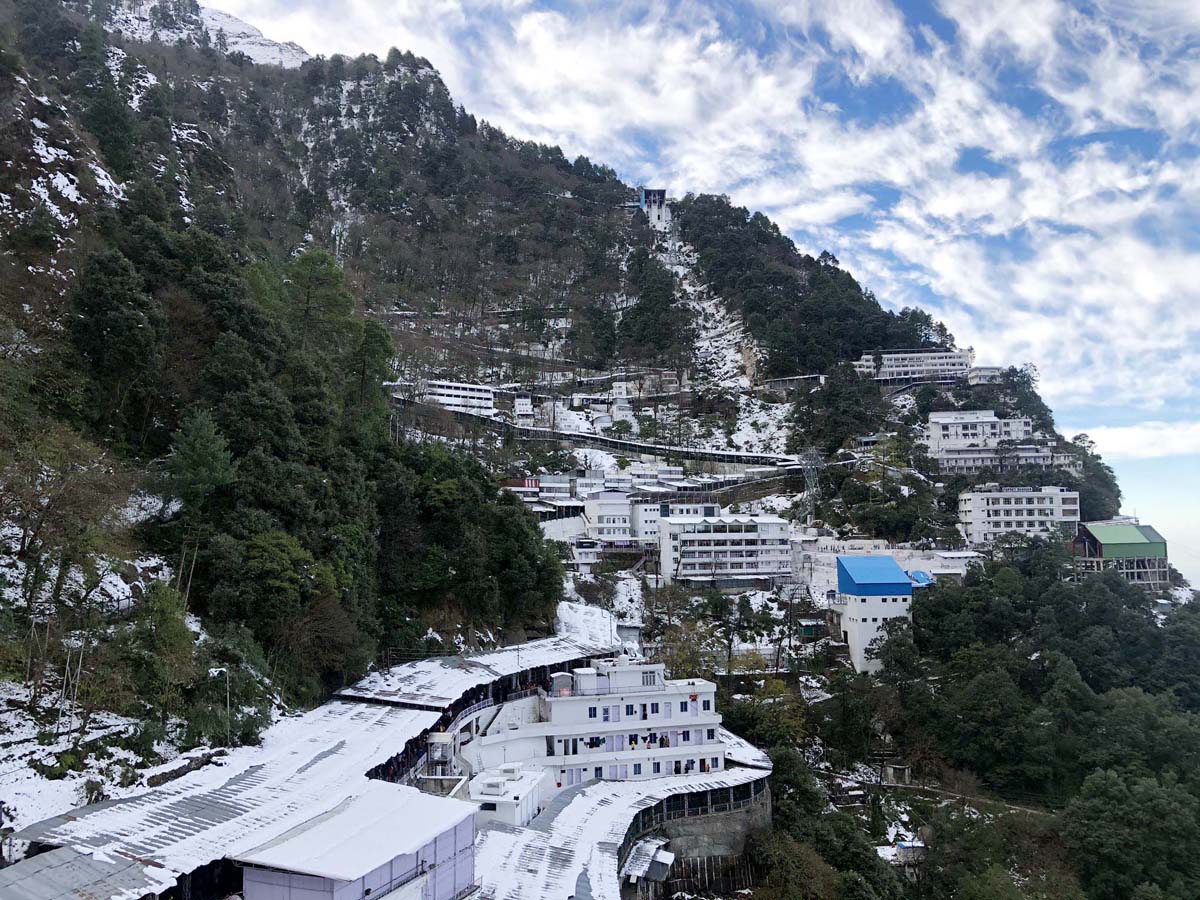Rajendra Mishra
Tourism Industry offers great opportunities and career options. International tourism nose dived due to Covi-19. Among Himalayan regions, J&K gets only 18 percent tourists. It is even behind Uttrankhand and Himachal in terms of tourist arrivals.
Jammu region of J&K is is now witnessing tourist growth inspite of the unfavourable conditions. Majority of these tourists are the pilgrims to Mata Vaishno Devi Shrine. If we see the recent trends of pilgrims influx, there was zero pilgrimage in the lockdown period w.e.f. March 19, 2020 to August 15, 2020. With time and sincere efforts regarding strict protocols of COVID-19 SOPs from the Shrine Board made the Yatra more safe and convenient for the pilgrims. The pilgrims in the month of January 2021 crossed above 4 lacs.
The Jammu region is the originator of tourism to Kashmir valley, majority of tourists visiting Kashmir are from Vaishnodevi Yatra. But the region is deprived of its due recognition. The natural beauty of Doda, Poonch, Rajouri, Udhampur and Kathua districts is unsurpassed but least marketed till date. Jammu undoubtedly forms an extremely attractive and diversified tourism product which has something to offer to tourists from all walks of life. The Jammu region of the UT is the most attractive in terms of its natural beauty and cultural heritage.
Despite enough potential for tourism business little has been done to devise a tourism policy for the region.
Soon after the restrictions were relaxed, many pilgrimage tourism destinations like Shri Mata Vaishno Devi saw an upward spike in tourists inflow. This led to the rejuvenation of crumbling sectors like hospitality, tour operators, transport, guides and other related jobs. This also implies the faith tourism in India holds utmost importance. Thus, the revival of this particular type of tourism (Pilgrimage tourism) needs resilient support from the government.
The Union Budget 2021 of India made an inequitable redressal to the tourism sector in the country. The budget has allocated Rs 1088.03 crore for development of tourism infrastructure for FY 2021-22 compared to Rs 1655 crore last fiscal. Meanwhile, the budget has raised the publicity fund from Rs 590 crores last fiscal to Rs 668.72 crore in FY 2021-22. Out of the Rs 668.72 crore allocated towards promotion and publicity, Rs 524.02 crore is for the overseas market and Rs 144.70 crore has been kept for domestic tourists.
NEED FOR A TOURISM POLICY
Tourism is the sole sector which requires growth-oriented measures, economic reforms and inclusive growth and a period after global pandemic needs economic recovery. In 2019, foreign and domestic tourist arrivals stood at 57,920 and 16.16 million, respectively. In September 2020, Rs. 1350 crore (US$ 182.83 million) economic package was announced in Jammu and Kashmir to boost tourism and the other sectors.
Policy Initiatives
A long term tourism policy is needed for the tourism growth of the region which will result in overall tourism development of the whole of the J & K UT. The main objective of such a policy will be to increase the number of tourists to 2 crore by 2015, from the present level of 70 lakh annually and to develop tourism in all of the districts of the region Kathua, Udhampur, Doda, Rajouri, Poonch, Reasi, Samba, Ramban, Kishtwar and Jammu.
The major share of tourist traffic in Jammu Kashmir comes from the Yatra to Mata Vaishno Devi Shrine. It goes to the credit of the Shrine Board Management that the pilgrimage to the shrine has been increasing consistently. The only missing link here is marketing the yatris to other beautiful destinations of the region. Even if a third of the yatris to Mata Vaishno Devi can be motivated to extend their stay by few days, the whole tourism Industry will boom. This requires a concerted effort by the players – the Government, the tourism industry and the locals.
Tourism Policy: To realise the tourism potential of the region, there is a need for establishing a Jammu Kashmir Tourism Development Board (JKTDB) as an apex statutory body in the tourism sector. The JTDB may consist of tourism experts as also town planners, architects and consultants. The main objective of the board will be to coordinate the activities of all tourism related bodies, like Department of Tourism, Shrine Boards, Tourism Development Authorities in the region and to restructure the tourism sector by involving all the stakeholders of travel and tourism industry. The board may strive to attract tourists to the region domestic as well as foreign tourists and also local tourists from Kashmir and Ladakh regions. The key result area will remain to promote tourism in the whole of Jammu Region with the pilgrimage as the focus. In addition it may work to explore new segments of existing markets such as other pilgrimage circuits. In this endeavour the said board may involve local bodies (municipalities) in tourism planning and promotion with an eye on providing quality services to all tourism consumers and stakeholders.
(The author is a faculty at Jammu University)
Trending Now
E-Paper


